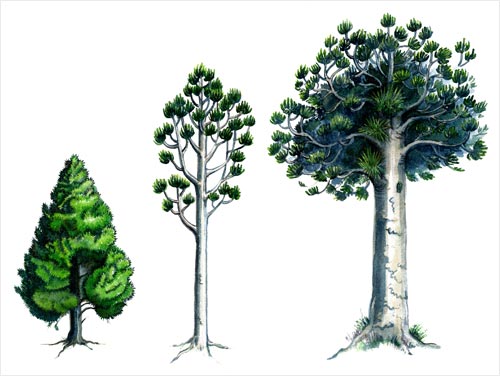
A kauri tree takes on different forms as it grows and matures. This diagram shows three of the most important stages, from adolescent to mature tree.
While young (left), the kauri has a typical conifer form with a tapering trunk, spiralling whorls of short branches, and a narrow, triangular crown.
Between 30 and 50 years, the tree begins to shed its lower branches (centre). At this stage it is called a ‘ricker’, after its use in the 19th century for naval masts and spars.
Once the tree has emerged above the canopy of the forest in its mature stage, the girth of its trunk increases and its top branches support a spreading crown of leaves (right).
Te whakamahi i tēnei tūemi
Te Ara - The Encyclopedia of New Zealand
Artwork by Rozel Pharazyn
This item has been provided for private study purposes (such as school projects, family and local history research) and any published reproduction (print or electronic) may infringe copyright law. It is the responsibility of the user of any material to obtain clearance from the copyright holder.









Tukunga
Great site very informative
Patrick Mooney (not verified)
10 o Ākuhata 2013
Tāpiritia te tākupu hou